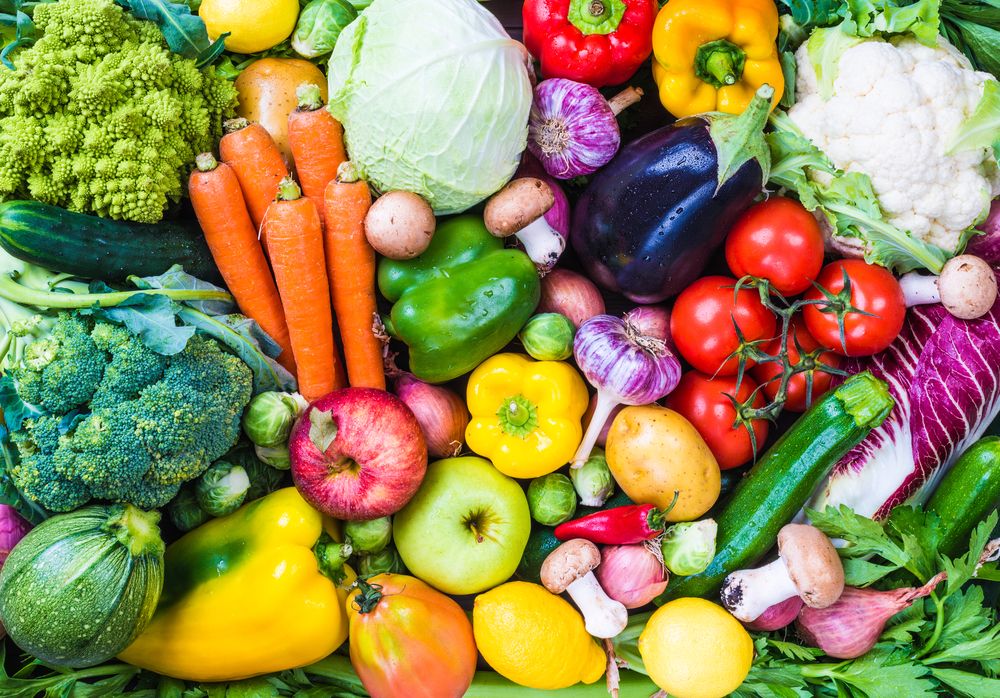As spring arrives, many associate the warmer weather with tidying up their homes. While the concept of spring cleaning isn't new, applying it to your diet might be. If you're seeking a dietary refresh to kickstart your spring season, you're in the right place. There are simple swaps, adjustments, and enhancements you can incorporate into your eating habits to boost your nutrient intake, work towards weight goals, and enhance overall well-being.
When we talk about a diet, we're simply referring to the foods and beverages you consume daily. It doesn't have to entail a restrictive eating pattern, and your diet can and should consist of a diverse range of foods from all food groups. Additionally, paying attention to factors such as meal timing, portion sizes, and food combinations can also contribute to a healthy dietary lifestyle.
To optimize your well-being and extract greater benefits from the foods you consume, consider these 10 methods to freshen up your diet for spring. Keep reading for more insights.
1) Prioritize produce.

Make it a habit to include fruits and vegetables in every meal and snack. These nutrient powerhouses provide essential fiber, vitamins, minerals, and antioxidants. Despite their benefits, many Americans fall short of their intake.
To enhance your nutrient consumption, target a minimum of 5 servings of produce daily. Not only does this enrich your body with vital nutrients, but fruits and vegetables are also typically low in calories, enabling you to consume more food volume with fewer calories. This approach supports weight management and boosts feelings of fullness.
2) Eat less added sugar

The sugar added to coffee, used in baking, and present in soda and candy can have detrimental effects on your health. Research indicates that frequent consumption of sugar-sweetened beverages can lead to increased liver fat and adverse changes in blood lipids.
As part of your dietary spring cleanup, assess the added sugar in your diet by tracking your intake for a day or two. Then, identify areas where you can reduce sugar consumption. This might involve using less sweetener in your coffee, substituting an afternoon chocolate treat with a bowl of berries, or cutting back on one soda per day. These small adjustments can accumulate over time, allowing you to indulge in some of your favorite treats while still promoting better health.
3) Toss refined grains.

Processed foods, particularly those centered around carbohydrates, frequently feature refined grains. Among these, white flour stands out as a common culprit, found in items such as white bread, certain cereals and crackers, and various baked goods.
During processing, white flour and similar refined grains lose essential nutrients like vitamins, minerals, and fiber. While some micronutrients may be added back afterward, fiber is typically not restored. Consequently, refined grains are less nutrient-rich and less satiating compared to whole grains.
When selecting flour-based products, prioritize those made with whole-grain flour as the main ingredient. This ensures a higher fiber content, enhancing both nutritional value and satiety. Additionally, reducing consumption of processed foods overall is an effective strategy to minimize refined grain intake. Instead, opt for less processed carbohydrate sources like brown rice, oatmeal, and sweet potato.
4) Include protein at each meal.

Protein stands out as the most satisfying nutrient, aiding in enhanced satiety and potentially reducing overeating throughout the day when included in each meal.
This means refraining from solely relying on items like toast for breakfast or pasta for lunch. Instead, complement these typical meal components with a protein source to establish more balanced eating habits. Transform your toast into an egg sandwich or spread it with nut butter for added protein convenience. Upgrade plain pasta by incorporating grilled chicken or ground turkey to create a protein-rich dish. For those adhering to a plant-based diet, consider bean-based alternatives, which offer significantly higher levels of protein and fiber compared to traditional noodles.
Incorporating protein into every meal not only fosters satiety but also helps meet your daily protein requirements, contributing to overall health and well-being.
5) Improve the fats in your diet.

Not all fats are equal, with those from processed foods and meat offering fewer health benefits compared to plant-based sources. Unsaturated fats, in particular, are linked to various health advantages and may even reduce the risk of heart disease.
To increase your intake of healthy fats, incorporate more fish and plant-based options into your diet. Salmon, tuna, avocado, nuts, and seeds are popular choices rich in beneficial fats.
Peanuts stand out as a cost-effective source of unsaturated fats. Packed with 19 vitamins and minerals, protein, fiber, and heart-healthy fats, peanuts offer a nutritional punch. Whether spread on bread or added to a smoothie, peanut butter provides an easy protein source. Moreover, peanuts make for a convenient on-the-go snack. In addition to convenience, research suggests that daily peanut consumption may lead to weight loss, reduced blood pressure, and improved fasting glucose levels, further enhancing their health benefits.
6) Stay mindful of portions.

Over time, it's easy to lose sight of appropriate portion sizes, especially when we're exposed to oversized servings at restaurants. This can influence the portions we serve ourselves at home. As part of your dietary spring cleaning, it's helpful to assess the typical portions you consume. This not only sheds light on the nutrient balance of your meals but also highlights areas where you might be consuming excess calories, potentially contributing to weight challenges.
A helpful visual guideline for healthy adults is to divide your plate into halves: half filled with produce, one-quarter with protein, and the remaining quarter with carbohydrates. Incorporating healthy fats into meal preparation further enhances the balance of your plate.
7) Clean out your pantry and fridge.

Over a year, it's common to accumulate ingredients that may have expired or gone bad. To ensure your pantry and fridge are stocked with the most suitable foods and beverages for your goals, dedicate some time to clear out any expired or spoiled items. This fresh start not only helps identify the foods you should prioritize but also eliminates potentially harmful options.
While decluttering, consider discarding or donating foods that don't align with your objectives. For instance, if you're aiming to cut back on sugar, dispose of items containing this ingredient. Of course, it's okay to keep a few indulgences, but minimizing temptations at home increases the likelihood of sticking to a healthier eating regimen.
8) Pay attention to when and why you're eating.

Making mindfulness a priority in your spring cleaning extends to your eating habits. Often, we eat in response to emotions rather than hunger cues throughout the day. While both approaches can be part of a healthy diet, it's important to be mindful of when and why you're eating.
The bulk of your eating should stem from physiological reasons, such as hunger prevention, fueling or recovering from exercise, and meeting calorie, macronutrient, and micronutrient needs. If you notice that emotions heavily influence your eating habits, or if you tend to eat simply because food is readily available, take a moment to assess whether you genuinely want or need that food. Being present and intentional about your food choices and meal timings can enhance your overall dietary intake, leading to improved health and wellness.
9) Stay hydrated.

Ensuring adequate hydration should be a straightforward dietary practice, yet many adults struggle to consistently meet their daily water needs. Just like eating, maintaining regular water intake throughout the day is essential. You can use your scheduled meals and snacks as markers to guide your hydration routine.
For instance, set a goal to drink 20 ounces of water between waking up and finishing breakfast, another 20 ounces before lunch, and an additional 20 ounces before an afternoon snack, continuing this pattern throughout the day. Hydration is vital for numerous bodily functions, including temperature regulation, joint lubrication, and digestive regularity. Aim to consume at least 80 ounces of total fluids per day, with at least half coming from plain water.
10) Eat more fiber.

Speaking of maintaining digestive regularity, while hydration plays a crucial role, ensuring an adequate intake of fiber is equally important. Fiber is exclusively found in plant-based foods, with notable sources including fruits, vegetables, whole grains, legumes, nuts, and seeds. Incorporating foods from each of these categories into your daily diet is essential as they collectively provide a wide array of essential nutrients while also contributing to your fiber requirements.
For most adults, aiming for a minimum of 25 grams of fiber per day is recommended, although some individuals may require even more. By consuming a diverse range of foods from different food groups throughout the day and including the aforementioned fiber-rich foods, you can meet this minimum intake, which in turn supports healthy digestion and heart health.

